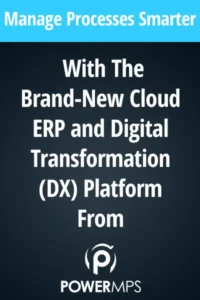Digital transformation is high up on the list of things COVID-19 has changed about business. Only ten percent of companies who failed to react quickly as physical sales slowed or halted avoided negative impact. The rest saw varying degrees of business loss ranging from twenty-seven percent to complete business closure. Seeing this troubling event, most businesses have scrambled to adapt entirely to going digital.
This technological metamorphosis is different depending on the business. The switch is usually focused on building up an online storefront coupled with digital payment acceptance for consumer and retail sales. However, for business-to-business companies who rely heavily on face-to-face interactions, the problems are about finding new ways to communicate, negotiate, and provide information. The danger, of course, is taking the “going digital” phenomenon too far, too fast. Because being ready for digital business doesn’t necessarily mean going paperless.
Customers Still Crave Paper
In the bid to move to digital, companies temporarily ignored printing and paper needs. Instead, they focused on procuring laptops, setting up VPN connections, and creating a secure environment as possible for work-from-home. Now that work-from-home and hybrid offices are an option, some companies question the need to bring back or expand their printing capabilities. But customers might not be as eager to move to paperless as they hype would like us to believe.
 According to a Consumer Action survey, nearly three-quarters of consumers actively request for utilities, insurance, and medical bills to arrive by mail instead over a digital format. The main reason? They understand that email and other digital notifications can go awry. While a paper bill is trusted to land in their mailbox, they worry digital formats will be caught in their junk mail, blocked by their spam filters, or get lost in their email inbox. These are all legitimate concerns, considering the average employee receives one hundred and twenty-one emails per day.
According to a Consumer Action survey, nearly three-quarters of consumers actively request for utilities, insurance, and medical bills to arrive by mail instead over a digital format. The main reason? They understand that email and other digital notifications can go awry. While a paper bill is trusted to land in their mailbox, they worry digital formats will be caught in their junk mail, blocked by their spam filters, or get lost in their email inbox. These are all legitimate concerns, considering the average employee receives one hundred and twenty-one emails per day.
Why Businesses Aren’t Going Paperless
And business perception among consumers and partners does not benefit from paperless, either. Most consumers (80%) think companies use “going paperless” as a ploy to save money rather than help the environment. And ninety-one percent of US consumers believe print and paper are sustainable communication – when materials are responsibly produced, used, and recycled.
But it isn’t only the receipt of bills, invoices, and statements that concern both consumers and business clients. There is a multitude of other technical issues that come to play when companies decide to eschew paper. For instance, what happens when files come through email corrupted?
Some email clients scrub attachments out of the email altogether. Or, if the item is sent through a download link or file-sharing system, company firewalls may block receipt of the file. Then there is the simple issue of incompatible file types. Not all computers have access to the software required to open every file type, even some of the most common ones. Printed documents, however, avoid all these issues.
The Power Of Holding Something
A particular set of people absolutely refuse ever to use a digital format to read a book. They say there is “something about holding a real book” that ebooks can’t replicate. They’re not wrong. According to experts, the human brain is developed to “navigate textual landscapes.” Or rather, the brain uses the sense of touch as a part of the reading process. This touch component is why people who write things down or markup and highlight physical documents are also more likely to remember the material.
Employees who print emails, handbooks, contracts, and other materials for review are also more likely to understand the contents of those items fully. The same can be said for consumers and clients for invoices, announcements, legal documentation, and even presentations and marketing. Thus, despite the potential ease of defaulting to email or file share delivery, printed documentation provides an added layer that can still be effective components of these essential business tasks.
Reducing Marketability
We already know the issues behind email delivery. For example, compared to standard email communications, marketing messages are even more subject to the spam filter trap. And, while email is relatively inexpensive at a standard 124% return on investment (ROI), it also has a relatively low response rate (0.6%) and a lifespan of only seconds.
But let’s imagine a business invested a little more time and effort to print out and mail their message to their target audience. That same message would have the physical interaction added to the messaging – leading to higher comprehension rates and greater longevity (17 days). Over forty-two percent of people who receive direct mail either read or scan the message. All of this leads to a whopping 5.3% response rate. By eliminating paper and print, companies miss out on a critical avenue to increase their marketability and potential sales.
Despite the COVID-19 push for complete digital transformation, there are limits to how seriously a business should consider eliminating paper and print from their day-to-day functions. As a potentially sustainable resource, most customers are skeptical of companies touting their “paperless” status. Employees and partners benefit from the ability to print and review essential documents. And businesses can use printed materials to have a longer-lasting impact on potential customers. So, it might be a good idea to re-think ditching the office printer and instead look for more streamlined and economical ways to take advantage of the benefits printers bring to your business.







